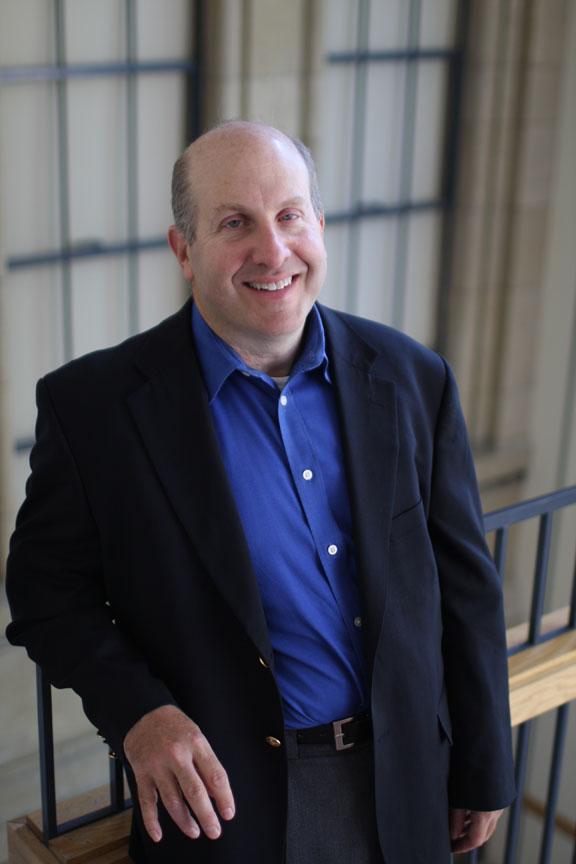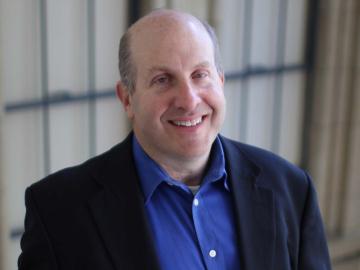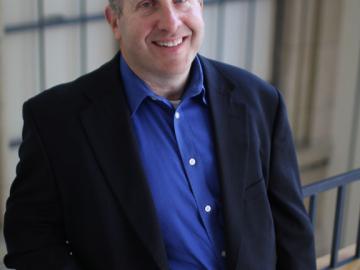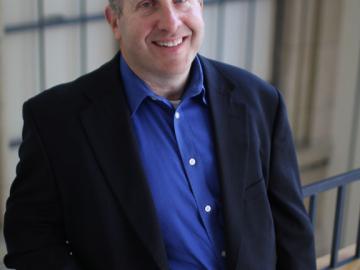Campus News
Creating a More Inclusive Arts & Sciences Environment
February 18, 2016
Marvin Krislov

For this week’s President’s Desk, I sat down with Dean of the College of Arts and Sciences Tim Elgren to discuss what he and Arts and Sciences faculty have been doing to create a more inclusive learning environment—from hiring more diverse faculty and supporting traditionally underrepresented students to increasing collaboration between the college and conservatory. See our conversation below.
Marvin Krislov (MK)
One of the many goals we have for Oberlin is to ensure an inclusive and equitable learning environment. From your perspective, what are we doing to make this happen?
Timothy Elgren (TE)
Our shared goal is to help every student thrive and feel that the college experience is preparing them for the impact they aspire to have. We certainly have compositional and interactional goals and are making progress toward identifying and addressing barriers that have kept us from making steady progress toward these goals. I’ve recently tried to frame these issues in terms of creating equitable pathways to success. This can help us in the academic program, in particular. It encourages us to invite students to articulate their definition of success and how Oberlin can partner with them to get there. Appreciating what students bring and where they are is a strong first step toward successful engagement. Our majors and program are incredibly strong; what we need to do now is similar to what many institutions are doing, which is to focus on how students present themselves as they enter college and listen carefully to better understand how we can best meet their needs.
MK
Another priority is achieving greater diversity in our faculty. We place great emphasis on making improvements in this area, and I know you are very focused on that personally. How are we doing?
TE
This is a big issue for every college and university. We have incredibly smart and committed people working on it, but we still have a lot of work to do. It really comes down to a deep commitment to reaching a level of compositional diversity on our faculty that accurately reflects our student body and our larger society.
We must first address the inadvertent barriers that have been put in place relative to how hiring happens. The faculty is deeply committed to addressing those barriers, and has focused on specific ways of framing positions more broadly in order to create deeper and broader pools of applicants, which is a great start.
Another part is how we run our searches. We have added interactional diversity as part of the rubric that our committees use in assigning full time employees and opening up searches, so considering the ways in which a particular hire can improve interactional diversity on campus is a very important part of the conversation.
In terms of specific hires, we’ve made some really significant progress. In the last year, seven of the 13 faculty we hired into tenure track lines were faculty of color. Over the last five years, 35 percent of new hires have been faculty of color. That number is 30 percent for the conservatory. We’re making good progress, but we still have a long way to go.
MK
One of the objectives of the new strategic plan is to foster academic and musical excellence through connected learning. Can you tell us what connected learning is and how it will benefit our students?
TE
Connected learning is a way of thinking more broadly about liberal arts. Our majors are really strong; the question is, how can we help students highlight and explore connections among departments or across the college and the conservatory and the museum and beyond the college? Connected learning is a way to make sense of the broader potential and expectations of a liberal education.
MK
Do winter terms and summer experiences or even opportunities beyond graduation fit into the notion of connected learning?
TE
Yes, those are all examples of opportunities to move seamlessly between curricular, cocurricular, extracurricular, and postgrad experiences. Our goal here is to help students weave a thread through the arc of their Oberlin experience—both their years on campus and the years immediately following graduation, which we’re calling the 4+4 model—and help them think about how those experiences will merge to help them meet their goals and their definition of success.
MK
I know you led the Arts and Sciences faculty in an exercise to define the curriculum and to try to create what we are calling curricular coherence. Can you tell us more about that?
TE
Again, the majors are so strong here, and naturally people connect with and find community within their departments. But the richness of a liberal arts education depends in part on the breadth that students experience by exploring disciplines beyond their major. Curricular coherence seeks to better articulate and be more intentional about those goals that lie beyond the major.
The faculty engaged with this idea over the last 12 months and in December passed a new set of goals for a liberal education. This was the tremendous work of a faculty committee led by Steve Volk and Marta Laskowski. These goals provide a framework through which we can have these important conversations with our students, in particular with our advisees.
MK
There has been discussion about developing academic opportunities that provide more effective mentorship and create more inclusive educational environments. One example of a program that accomplishes this is STRONG (Science and Technology Research Opportunities for a New Generation), which we kicked off this past summer. Can you tell us what kind of feedback you have received about STRONG and where you see it going?
TE
Much of the credit for STRONG goes to Afia Ofori-Mensa and the great work that she’s done to craft the program. It’s geared toward students who are traditionally underrepresented in the sciences and enables them to join the science community here in the summer before they matriculate and connect with faculty members and older students who become their research mentors.
The first cohort had an incredibly successful year, which is great. Ultimately, the goal is to have a perpetual cohort of 40 STRONG scholars in residence, who will serve as a network and support system for new students who are traditionally underrepresented. This program will help them to thrive and persist in the sciences and realize their goals.
MK
What other programs are you and your team working on to help create an inclusive learning environment?
TE
Marcelo Vinces, who is working with others on a Howard Hughes Medical Institute grant, has created many opportunities in the sciences for STEM students. OWLS, the Oberlin Workshop and Learning Sessions, and CLEAR, the Center for Learning Education and Research, are two resources that have already started to show great success and great promise. Both Afia and Marcelo have been masterful at drawing faculty into these programs, because the faculty are deeply committed to creating pathways for student success.
The research programs that we have that are longstanding, including the Mellon Mays and Oberlin College Research Fellows, are really successful programs that provide opportunities not just in the sciences but across many disciplines. We know from the literature on high impact practices that research experiences are an important way for students to extend the classroom and to really think about the ways in which they can invest and assume intellectual ownership of a project. Research projects allow them to move forward using their own creativity and their own intellectual impact, not to mention the connections they make with faculty members and with other students who are doing similar projects. Those are really powerful.
MK
You’ve accomplished a lot in the one and a half years you’ve been here. If you had to choose one thing that you are particularly excited about, what would you say?
TE
That’s like choosing your favorite child. There are many, but the things that we’ve already talked about are among them. The changes to the way we run our faculty searches have been very important. The work that we are doing on the curriculum is an absolute imperative. We have to emphasize the power and impact of the liberal arts aspect of this education—the strength of the individual departments coupled with the opportunities for exploration across disciplines.
One of the really great joys—one of the surprises, I guess—has been discovering the potential for collaboration between the college and the conservatory. I couldn’t have imagined that working with [Dean of the Conservatory] Andrea Kalyn would have coalesced so quickly, that we would find so many immediate opportunities for collaboration.
In my early conversations with faculty, they regularly pointed to the passion they have for transdisciplinary learning and a desire for opportunities to reach beyond their departments. This quickly led to conversations with Andrea and with [VP for Finance and Administration] Mike Frandsen in which we began thinking about how we might facilitate that institutionally. This generated the idea for theme-based course clusters: courses that could be taught together around particular topics that would bring together disciplines or allow us to address big, pressing issues, like mass incarceration or the post-fossil fuel economy. I think that kind of integrated learning is a way to model for our students how we bring multiple perspectives to bear on really important transdisciplinary challenges.
MK
Your turn to ask some questions.
TE
I have two. First, we are coming to the end of the Oberlin Illuminate campaign, the most successful in the history of the college. What are your post-campaign priorities?
MK
First, I just want to say how pleased I’ve been by the success of this campaign and how thankful I am to all the people who have come together to support Oberlin, including many alumni and even those who didn’t attend but just believe in the institution. We’ve really done extraordinarily well and have laid a great foundation for Oberlin going forward.
In the near term, my fundraising priority will largely be scholarships. It is critical to keep the doors of Oberlin open to students from all backgrounds. We know that Oberlin can be a very expensive place, and our commitment is to meet the full need of every student who comes here. I also think that continuing to raise money for faculty support is very important. We continue to put out the message that Oberlin is worth investing in, and that the quality and the imagination and the initiative that our students and faculty demonstrate is worth supporting. Overwhelmingly, this message has resonated with our donors.
TE
You take great pride in the courses you’ve taught at Oberlin. How has this informed your sense of what it means to be a faculty member at a liberal arts college?
MK
I am very enthusiastic about my classes, as my students tell me. I like to integrate challenges in politics and policy and law with what’s happening in the world now, so each semester’s class is different.
Part of what I am trying to teach students is how to evaluate current events by drawing on the past—and on analysis and critical thinking—to make sense of the present. They must be able to understand different arguments, to understand different types of evidence, and to evaluate that evidence.
This semester we are focused on the elections of 2016, particularly the presidential nominating process. One of the things we are talking about is how this election is different from previous elections. It is very exciting for me to be able to engage with the students, to hear what they are thinking about, to see them develop intellectually, to see how they can present their analysis both on paper and verbally. I hope they learn not only the substance of what we are exploring in class, but also a set of skills that they will take forward. That’s what I think is fundamental to a liberal arts education and my role as a faculty member.
Tags:
You may also like…
Thank you, Oberlin
June 22, 2017
It is hard to believe this will be my final "President’s Desk" column. But in August, I will become president of Pace University in New York. It has been an honor and a privilege to serve as your president.
Remembering Jonathan Demme
May 5, 2017
I’ve been thinking a lot about Oberlin parents and families since I received the sad news last week that Jonathan Demme, the brilliant film director, had passed away. Although Oberlin isn’t his alma mater, Jonathan really came to appreciate the College, Conservatory, and our community. His visits always seemed to energize him, and he became a stalwart supporter of our cinema studies program and the Apollo Outreach Initiative, which offers filmmaking classes to local school kids.
Response to Proposed Federal Budget Cuts
March 31, 2017
The budget proposals being put forward by the Trump administration are deeply troubling in many ways for our society and for American higher education, especially for liberal arts institutions such as Oberlin. The proposed cuts in discretionary spending are contrary to our values of access and inclusion, and our commitment to scientific research, the arts, and the humanities.


